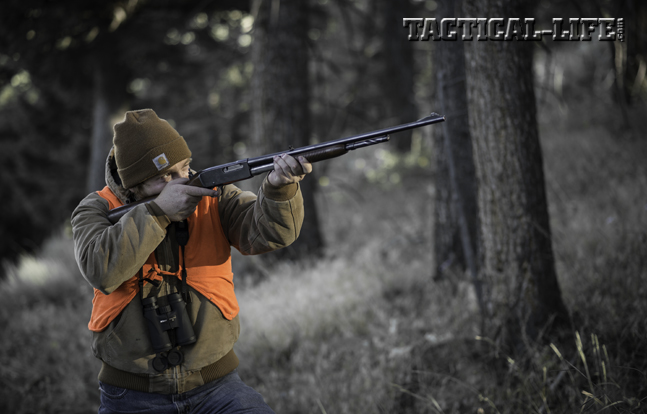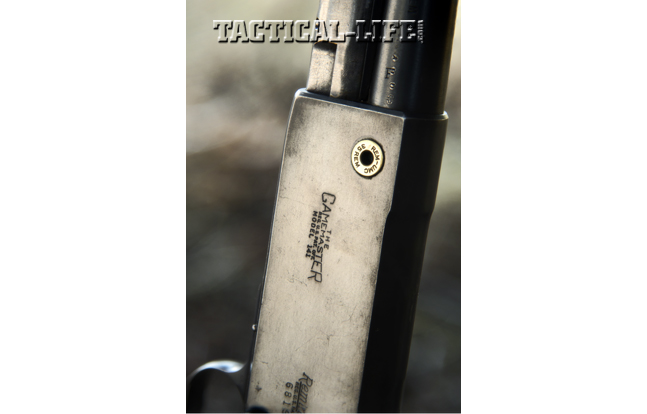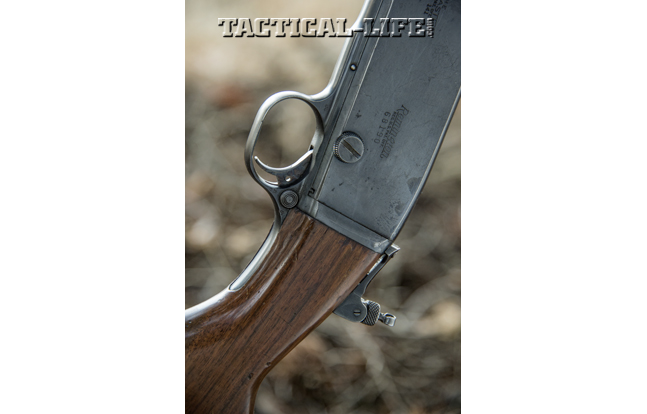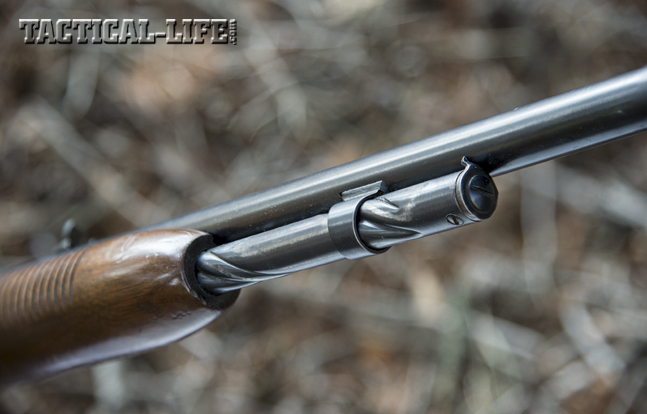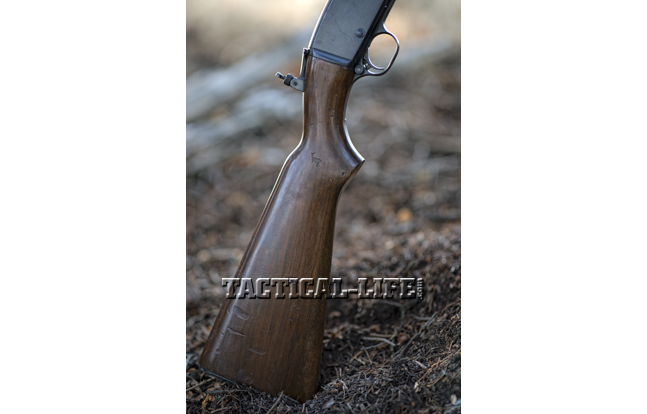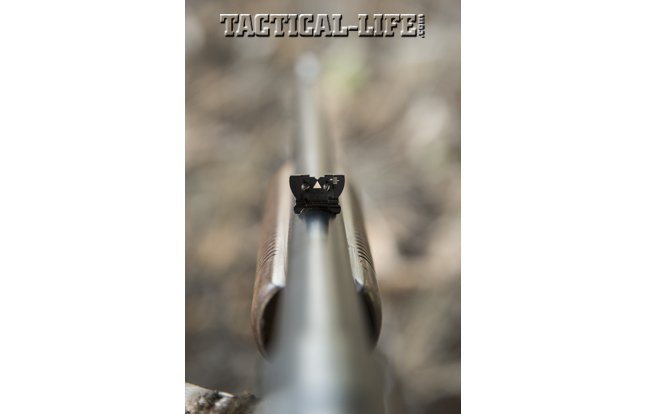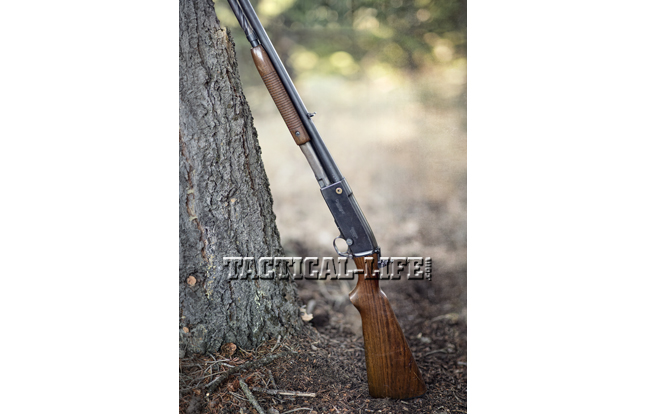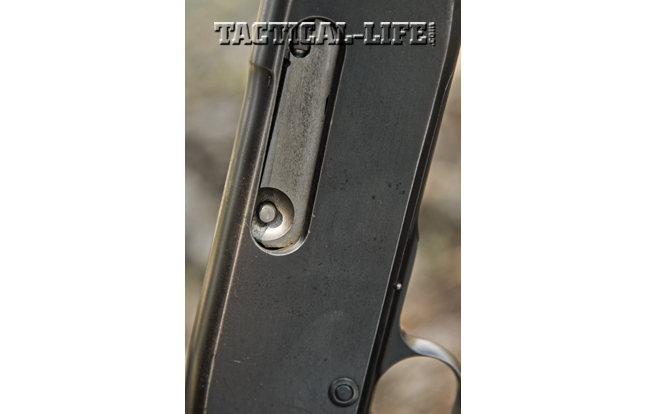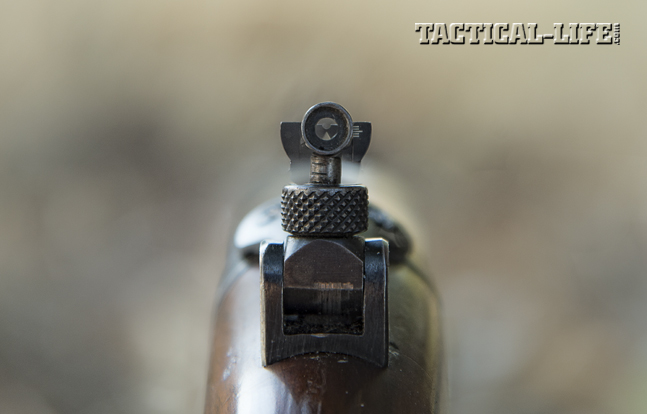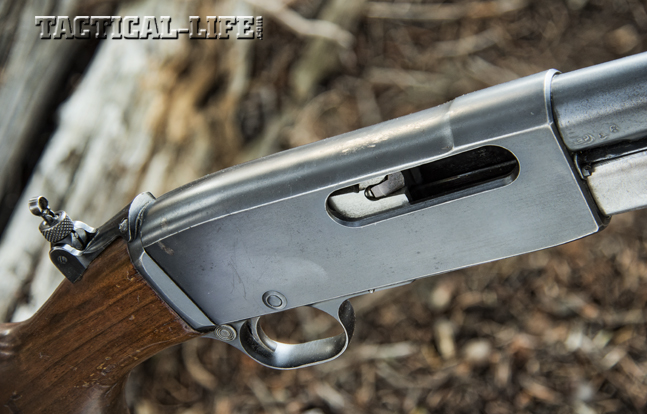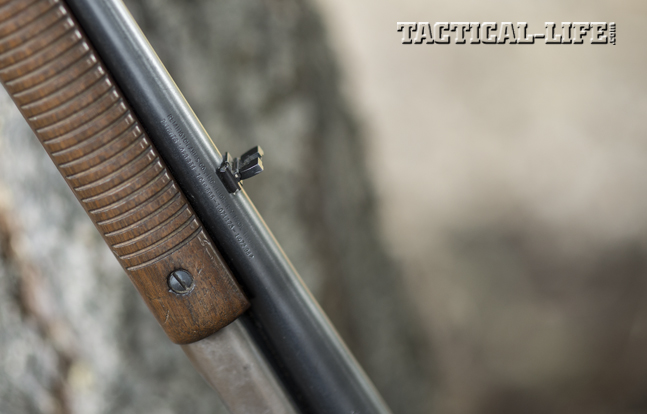Remington looked for a way to enter this market but could not find any vulnerability. The lever-action market seemed saturated. What was desired was another fast-firing, high-velocity design that would be competitive. In 1908, Remington released the Model 8 autoloading rifle, designed by John Browning. But the Model 8 operated more like an oil-drilling rig than a rifle, and it was heavy and homely to boot. The brass at Remington said they wanted a light, fast-repeating rifle with sleek and sexy lines. John Pederson—the designer of the Pederson Device for the Model 1903 Springfield rifle some years later—took on the duty of designing a rifle to compete with the lever action.
Pederson’s Pump
His first iteration came in 1913, when Remington introduced the Model 14 pump- or slide-action rifle. Four chamberings—.25, .30, .32 and .35 Remington—were initially offered. The same case was used, differing only in neck size and some minor shoulder dimensions. A companion rifle Remington christened the 14½ was chambered in a couple of the more popular pistol cartridges of the day, the .38-40 and .44-40 WCF.
Advertisement — Continue Reading Below
During the next 23 years, the Models 14 and 14½ were fairly popular, with some 125,020 units finding their way into the hands of hunters. In order to compete with the lever guns, the rifle had to be sleek and light. The Model 14 has three design features that are novel. Its magazine tube has a spiral built into it that prevents the point of one bullet from resting on the primer of the next cartridge. Also, the magazine tube moves fore and aft with the forend during cycling. Lastly, the bolt has a button on its side that releases the bolt so that the magazine may be emptied by cycling the cartridges through the gun.
The four chamberings were not all that new or enticing. In .30 Remington, the rifle was on a ballistic par with the popular .30-30 Winchester. Both the .25 and .32 Remington cartridges were pretty lackluster, but eastern woods hunters who also hunted black bears were quite fond of the .35 Remington with its 200-grain, round-nose bullet flying at 2,100 fps.
Production of the Models 14 and 14½ was suspended during the Great War but resumed in 1919. Steady sales continued throughout the 1920s, until the stock market crashed in 1929, ushering in the Great Depression. The DuPont Company had been supplying Remington with gunpowder for many years for use in its ammunition. As the Depression continued to take its toll, DuPont saw an opportunity to gain controlling interest in Remington and did so on May 23, 1933. Along with a much-needed capital investment, DuPont ordered that Remington reevaluate its entire product line, with an eye toward cutting costs and making the production of each product as cost-efficient as possible.
Birth Of The 141
Advertisement — Continue Reading Below
In 1935, G.H. Garrison reviewed the Model 14 rifle and offered some cosmetic, as well as functional, improvements. Rifle barrels were lengthened from 22 to 24 inches and from 18 to 18.5 inches on carbines. The forend was flattened slightly to give it a slight beavertail treatment, and the stock was redesigned for faster handling, along with adding a shotgun-style steel buttplate. The improved rifle was called the Model 141 Gamemaster, and a rendition of a brass cartridge head for which the rifle was chambered for was imbedded in the receiver on the left side. Part of the paring process included dropping the .25 Remington cartridge from the lineup after 1936. Today, this chambering is considered very rare in the Model 141.
A Standard Grade Model 141A sold for $46 in 1936. The Model 141C Special Grade went for $79.75, the Model 141D Peerless Grade cost $146.85, and the 141F Premier Grade was $300. The Model 141 was produced until 1950, except for the World War II years, and some 76,881 rifles were sold. Two years after the last Model 141 left the factory, it was replaced by the Model 760 Gamemaster rifle.
Although the Model 141 didn’t set the world on fire, the slide-action Remington became a staple of country people who were more interested in filling their larder than a bunch of fancy frills on their rifle. I bought a Model 141 in .35 Remington from an estate sale several years ago and used it on a few wild hogs and one doe whitetail. My impression is that it’s a fine workaday rifle—dependable, handy and accurate for its chambering. Collector interest is rather ho-hum, with a 100-percent specimen fetching perhaps only $500 today, though carbine versions manufactured up until 1942 command an almost 100-percent premium over rifle versions.
Advertisement — Continue Reading Below
Gamemaster Handling
Operation of the Model 141 is relatively simple. Up to five cartridges can be loaded via a loading port on the bottom of the magazine tube. A button located toward the rear of the bolt releases the bolt when pressed. Grasping the forend and pulling it rearward opens the bolt, and if a fired cartridge is in the chamber, it is removed with a claw extractor on the upper left side of the breech face. As the bolt completes its rearward travel, a fixed ejector pushes the fired case from the receiver. The magazine tube travels parallel to the bolt throughout the operating cycle, supported by a floating carrier dovetailed into the underside of the barrel. Cartridges under spring tension are fed to a carrier and lifted into the chamber during the forward motion of the forend. Lockup is via a lug machined into the top of the bolt and a tapered underside that moves the bolt upward during the forward cycle. A trigger-locking safety located at the rear of the triggerguard prevents the rifle from firing inadvertently.
The 141’s sights are typical of the era. A brass bead dovetailed into an integral ramp serves as a front sight. A folding, semi-buckhorn rear sight—adjustable for elevation by two small screws—is dovetailed into the barrel. Windage is adjusted by driving the sight within the dovetail. A common add-on is some type of peep sight, and my Model 141 has one attached by two screws to the rear of the receiver. Later examples were drilled and tapped for scope bases.
Advertisement — Continue Reading Below
Most Model 141s are stocked with plain, straight-grain walnut, though fancier walnut was seen in the few premium grades produced. The metal finish is that lovely, velvet-like subdued blue seen on pre-WWII guns. The back end sports a checkered steel, shotgun-style buttplate. In all, it presents a trim, fast-handling package despite its nearly 7.5-pound weight.
Still Fit For Game
The 141’s accuracy is about what one would expect from an open-sighted rifle of moderate caliber. Typically, I’ll get groups around 2 to 2.5 inches at 100 yards if I am having a good day. On the other hand, my six-decade-old eyes are finding it more difficult to find that small notch in the rear sight, hence groups can swell to 3 inches on not-so-good days. The peep sight helps a lot. All of the 141’s cartridges are pretty much limited to 200-yard shots.
Advertisement — Continue Reading Below
What I like about this rifle is its traditional American workmanship at a blue-collar price. It is all steel and walnut, machined and hand finished. The Remington Model 141 may not be the rifle that the upper crust craves with Circassian walnut, rosewood embellishments or cartridges that lay herbivores low at a country mile, but to my eye it is elegant because of its simple yet clean lines, and its reliable performance. For more information, visit remington.com or call 800-243-9700.
